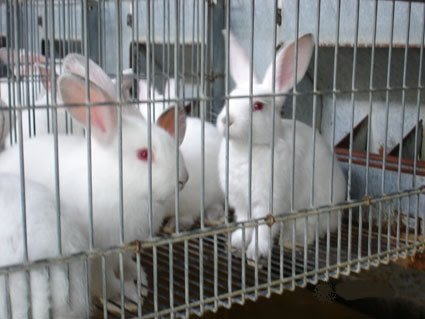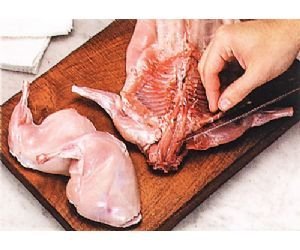The breeding of rabbits: is the economic breeding of rabbits, its importance is that many of the industrialized countries in their eagerness to find foods with excellent nutritional properties and with minimal adverse effects for consumers, have found in it, an appropriate option to the needs of the population.

Source
Rabbit meat is very healthy, with only 5% fat. Official organizations, such as the Food and Agriculture Organization of the United Nations (FAO), have recommended the raising of rabbits, considering that it is an economic business to install, which gives good income for their breeders. For FAO, the production of rabbit meat is important, taking into account the rate of accelerated growth of the world population, besides being a meat rich in proteins and very tasty.

Source
Ways to raise rabbits
Raising rabbit does not need to invest so much capital, since it only needs a small space in the farm or cabin, to install the cages, since the rabbits do not need much space, in each cage they can keep between 3 and 5 rabbits, but to avoid problems With respect to the population, it is advisable to follow the instructions of experts or people with experience in this type of breeding.
Density of rabbits per cage
It is important to take into account the size that the cages should have, since it should be spacious enough so that all rabbits can move comfortably, the design of the cages will depend on the number of rabbits that will be housed for each space . The cages most used in rabbit breeding are made of galvanized metal with metal or plastic rod floors, in terms of their measurements, these can be designed with a width of 70 cm and a height of 35 cm. the length will depend on the number of rabbits that are going to breed, the important thing is to make divisions for each meter, so that each cubicle has a space of 70 cm by 1 meter, to house 3 rabbits.

Source
Conditioning of cages for rabbits
Nests: The breeding females should have nests where they will give birth to their young, staying in these places throughout the lactation. The nests should preferably be made of wood and they should comfortably enter the female and her litter. In the lower part should have straw or other material that provides heat to the litter. The opening of the entrance should be 15 to 20 centimeters from the floor to avoid the very early departure of the rabbits (pups).
Feeders for forage: So that the rabbits do not trample and damage the grass, one-inch wire mesh feeders should be used. The feeder can be placed as a division between two cages. Reedbeds of reeds, eucalyptus or wire can also be made.
Feeders for grains: Rabbits should also have grain feeders or concentrates. The feeders can be made of wood and brass to be used by several animals, or individual feeders of clay and brass.
Drinkers: Rabbits should have at their disposal plenty of drinking water, these drinkers can be made with plastic bottles and metal tubes for the water outlet.
Can also be used as drinking troughs, clay or brass grains feeders.Source
Feeding rabbits
Rabbits are herbivorous animals, for their food we can use products from the farm, such as hay, grains, some leaves of trees, such as willow, acacia, blackberry, legumes, fruits.

Source
Sexual and reproductive cycle of rabbits
The most appropriate age to start reproduction may vary according to the type of rabbit breed, in addition to sex, its individual characteristics and the season. Also, the pregnancy of the female lasts about 31 days and lactation about 56 days, totaling about 87 days. Therefore each female is hypothetically ready to give birth and raise four litters (87 x 4 = 348) in 365 days, with a breathing time of 17 days. Source
Nutritional contribution of rabbit meat
Rabbit meat has a low caloric content with contiguous values at 130 Kcal / 100 g. This is due to its low fat content, very useful for health. On the other hand, the contribution of cholesterol is low, only 26.5 mg to 37.5 mg / 100g.
Among the nutritional values we can mention the following:
Rabbit meat is very low in sodium.
High percentage of potassium. The contribution of potassium benefits the loss of salt by the kidney (natruresis).
Rabbit meat offers minerals such as: Phosphorus, Iron and Magnesium.
Also antioxidant nutrients such as Selenium and Zinc that help prevent cardiovascular degenerative diseases.

Source
